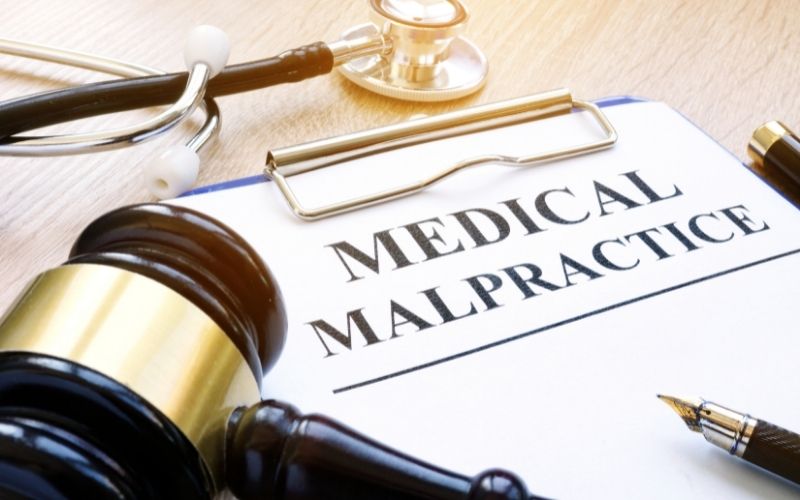Going through treatment for a serious medical issue is stressful. Not only are hospitals, doctors’ offices, and surgical centers unfamiliar places, but it is also difficult to go through a process where you have very little control over the process and no assurance in the outcome. That said when a serious injury or illness arises there is little choice other than to trust that the medical professionals who guide your care are competent and compassionate.

While the vast majority of patients will move through treatment with no negative consequences, some will fall victim to mistakes that can leave them in far worse condition than before they sought treatment. Understanding the types of mistakes that can lead to a medical malpractice suit can help families rest assured that there is help available in the event a healthcare provider was negligent.
What are some common types of surgical errors?
Surgery is a serious medical procedure, and even seemingly minor surgical procedures pose a risk of harm. If anesthesia is part of your procedure, there are multiple issues that have the potential to cause harm.
Your anesthesiologist should perform a thorough review of your personal and family health history in advance of your procedure. This information allows them to deliver the appropriate medication to sedate you during the procedure. You should be provided with clear instructions on how to prepare for anesthesia, and your vital signs should be carefully monitored throughout the surgery and as you awaken.
Surgical errors are also a common area of focus within medical malpractice cases. Most people are familiar with horror stories where the wrong body part was removed or operated on. Other high-profile cases center on surgical tools being left inside the patient’s body after surgery.
While these events do occur, they are relatively rare. Far more common are surgical errors that are far less sensational. Surgery might take longer than the patient’s body can bear, or too much tissue might be removed. Uncontrolled bleeding is also a common problem in surgery, as is failing to take the measures necessary to reduce the risk of infection.
What if a medical condition is improperly diagnosed?
Misdiagnosis is a common area of focus in medical malpractice cases. While doctors are certainly not supplied with a crystal ball when they enter the profession, they are equipped with extensive training in how to properly assess patients and diagnose a wide range of conditions.
If your doctor does not determine the source of your symptoms, you may be placed on a treatment plan that does not address your needs, or even worse, one that exacerbates your symptoms. Misdiagnosis also delays proper treatment, which will allow the condition to worsen past the point where treatment can be effective.
The key to a successful medical malpractice case that centers on misdiagnosis is being able to prove that a different medical professional with the same level of training and experience would have reached the proper diagnosis.
Can birth injures fall under the umbrella of medical malpractice?
Welcoming a child into the world is an incredibly rewarding experience for medical professionals, but it also comes with the highest degree of responsibility. Infants require the greatest care and concern, especially during and immediately after the childbirth process.
There are numerous types of birth injures that can form the center of a medical malpractice case. Broken bones, cuts, bruising, paralysis, infection, and cerebral palsy are just a few. Doctors who fail to properly anticipate the size of a baby’s head or body or those who don’t properly respond to signs of fetal distress can be held liable for birth injuries.
Improper prenatal care can also cause health issues that lead to a medical malpractice case. New mothers need guidance and support as they transition into their roles as caregivers. Doctors have a responsibility to provide the information and support needed to help new parents give their children the highest possible level of care. One of the more common issues that occur is a failure to notice or respond to signs that an infant is not developing along with standard timelines.
Can medication errors lead to a medical malpractice case?
Never before have there been so many pharmaceutical treatments available to patients. For the doctors who prescribe drug therapy, choosing the right medication and prescribing the proper dosage is of utmost importance.
When a doctor fails to thoroughly assess a patent’s existing medication schedule before adding new drugs to the mix, serious health issues can occur, up to and including death. Failing to monitor how a patient is responding to medication is also irresponsible and can lead to serious problems.
Finally, there is the matter of addiction to consider. Doctors have an obligation to explain the risk of addiction to patients, and to try to find medication approaches that reduce the risk of addiction. When a patient begins to show signs of reliance on a particular medication, doctors should search for ways to treat the pain or other symptoms with an approach that does not carry the same risk of addiction.
What should I do if I suspect medical malpractice?
If you’re concerned that you or a loved one may have been subject to medical malpractice, your first step should be to reach out to a skilled medical malpractice attorney. Your legal advisor can listen to the details of your case and determine if a healthcare provider was negligent. If so, you’ll discuss all of your options for legal recourse, and gain an understanding of how the process will most likely unfold. This gives you all of the details you need to make an informed decision about your treatment and empowers you to take actions that align with your needs and goals.